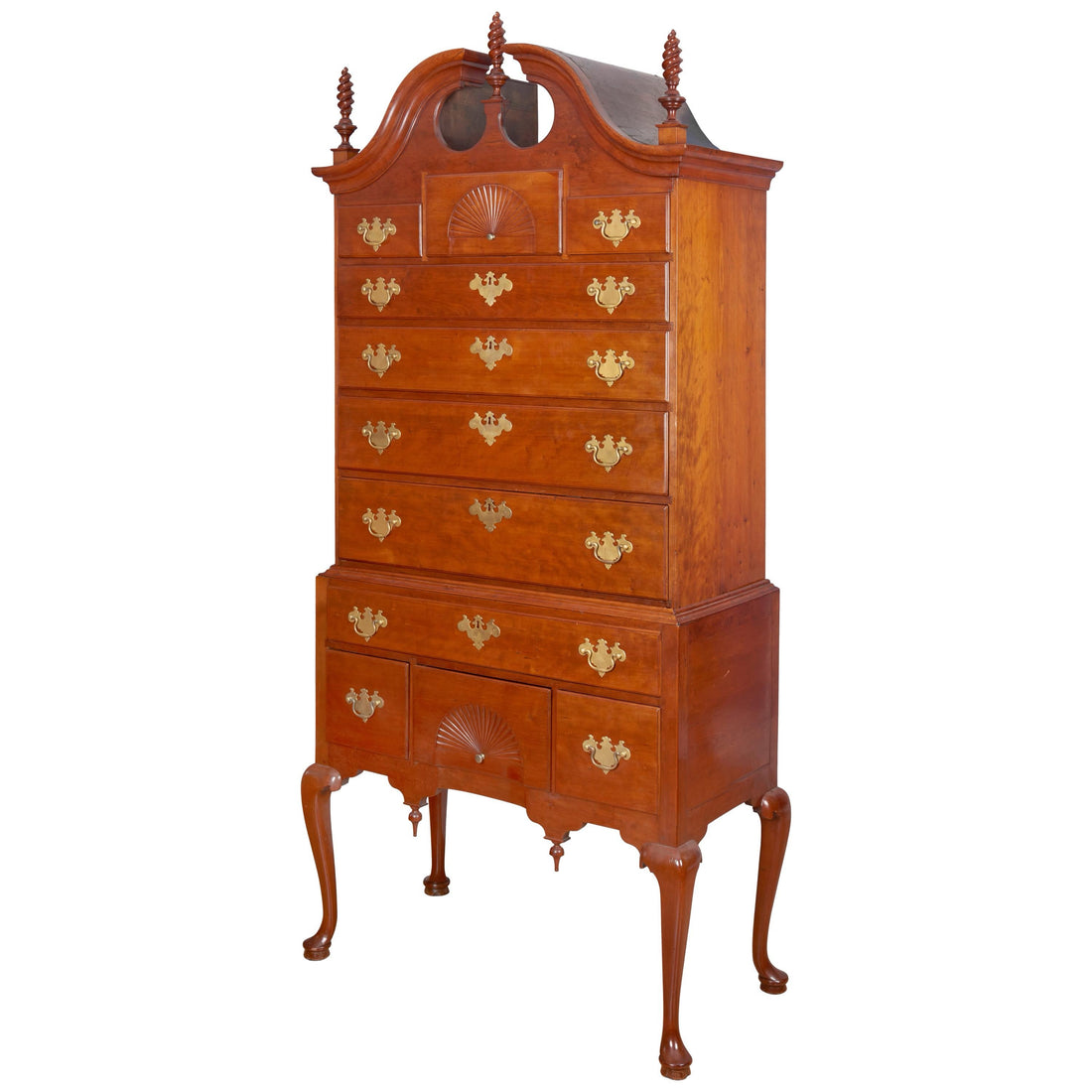
Colonial Period (1700 to 1780)
Colonial (1700 to 1780)
Predominant Styles: William and Mary, Queen Anne, Chippendale, Georgian
The Colonial period continued to draw influence from England including styles like William and Mary, Queen Anne, and Chippendale, with the American aesthetic being more conservative. From a craftsmanship standpoint cabinetmakers began to use dovetail joinery as well as mortise and tenon. Mahogany, elm, and walnut were also more predominantly used in this period.
A new style emerged after William and Mary, named after Queen Anne, who ruled England from 1702 to 1714. American Queen Anne furniture became widespread between the 1720s until about 1750 and is characterized by delicate lines, slender proportions, graceful S-curves, most notably the cabriole leg and bonnet top pediment. Walnut was the favored wood, but mahogany, native American cherry, and maple were also used. Japaning continued in popularity, but natural wood, richly figured and carved, was very popular.
The expansion of urban centers led to the evolution of regional differentiation. The most celebrated and accomplished furniture was produced in Newport, Rhode Island and Philadelphia, where dense mahogany was used to produce expertly carved chairs, tea tables and high chests of drawers for the emerging elite.
The Chippendale style is an ornate variation of Queen Anne designs produced from around 1755 to 1780, with many pieces based directly on the designs in Thomas Chippendale’s The Gentleman and Cabinet Maker’s Director, first published in England in 1754. The Chippendale style combined elements from three distinct sources: French Rococo, Chinese ornamentation and Gothic architectural details. Overall, Chippendale is characterized by a profusion of carving, predominantly on mahogany, with features including acanthus leaves, opposing ‘C’ scrolls, and ruffled, rocaille motifs on the splat, knees and skirts of chairs and case pieces, which frequently sit on claw-and-ball feet or scrolled bracket feet for case goods.
The Georgian style is a more ornate version of Queen Anne with heavier proportions, elaborately carved cabriole legs terminating in a pad or ball-and-claw foot, ornate carvings, pierced back splats and the use of gilding. It is named after George I and George II who reigned England from 1714-1760.